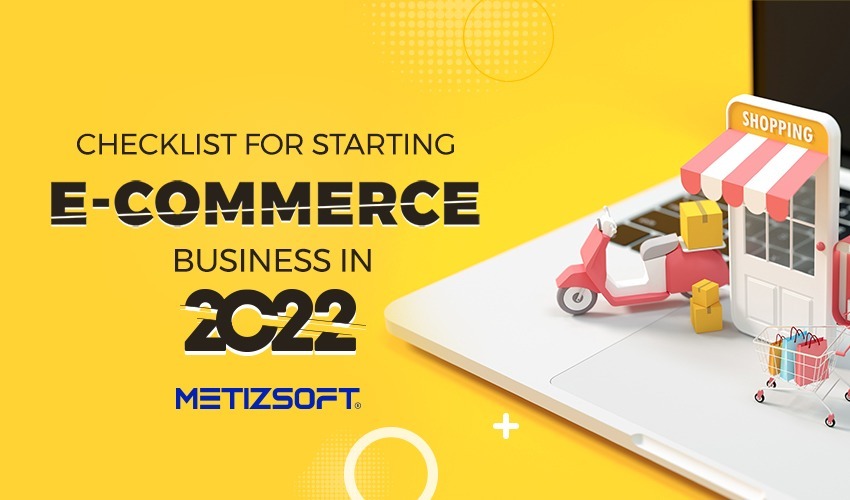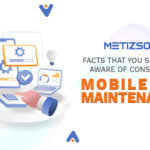
If only there existed an ultimate checklist for starting an eCommerce site. Well, worry not, as here we have compiled the best eCommerce launch checklist for you.
This guide will help you to create a beautiful, professional website that will guarantee a successful launch. Read through the list and mark off each point to make sure your site is top-notch.
Table of Contents
The First Step on our List is to Create a Solid eCommerce Home Page Design
The homepage gets the highest traffic on an e-commerce site. You want the first-time visitors of your site to keep looking around. It is essential to make sure that the homepage interface and navigation are appealing to build trust and create lifelong customers.
If your store has thousands or even hundreds of products, showcasing them all on the homepage can be tricky. You have to fight the temptation to just throw everything on the homepage, as it can become overwhelming.
Below are a few points you should be double-checking:
- Keep things simple.
- Add links to your most popular products
- Include your logo on the homepage.
- Use captivating images.
- Display all the special promotions, special deals, and free shipping options.
- Keep products categorized properly
- Add an area to search for products.
- Include an area to display the latest news and updates.
Designing the Rest of the Pages is the Next Step on our eCommerce Launch Checklist:
Once you’re done designing a good eCommerce home page design, it’s time to add the rest of the standard website pages. Here’s a list of standard pages that need to be included in your website.
- Categories: This refers to the landing page for all the top-level categories. It’s a page that displays an overview of what’s within different categories rather than listing all the products.
- The About page: This page should be about your brand’s story, the people behind your brand, your goals, and what your brand is all about. It helps people understand the brand they’re buying from better and is vital in building a personal connection.
- FAQ (Frequently Asked Questions) page: Make sure to include the answers to the most common and frequent questions your customers might have about your products.
- Terms of Service: A page that includes all legal aspects of your business.
- Login/Create Account: A page that helps your customer manage their account activity.
- Cart Page: The shopping cart lists everything the user has added and shows estimated shipping costs.
- Other pages that should be added are Contact Us, Return/Refund policy, shipping details page, order history, shipping addresses, and payment information.
Organizing all your Products Properly is the Next Step on our List.
Here are a few items you can include on your different category pages:
- A quick introduction about the collection.
- A featured image.
- A detailed product gallery with links to the product pages.
- Add ratings and reviews for the items inside that collection.
- Add links for sub or parent categories.
- Filtering and sorting tools that let customers optimize the search.
Crafting Good Ecommerce Product Pages is the Next Step in our Checklist for Starting an eCommerce Website.
Many people are going to find your eCommerce website through search engines, and chances are they are going to land directly on one of your product pages.
So it’s crucial that you use the best eCommerce product page design possible. Each page must include the necessary tools and media that push people to buy your products.
The following list will help you with crafting the best eCommerce product page design for your site.
- Include professional high-definition product images with zoom-in functionality.
- Provide multiple product images and 360-degree viewing angles.
- Include a section for customer ratings as well as reviews.
- Listing related products will improve your upsell potential.
- Showcase free shipping info or a clock that shows the time until a deal ends.
- Include Add to Cart and Add to Wishlist buttons.
- Include detailed information about your products, including various sizes, colors, washing capabilities, specifications, etc.
- The purchasing process should be as smooth as possible for the customers.
Develop a Distinct Look and Infrastructure for your eCommerce Website
The next step on our eCommerce launch checklist is to ensure that your website is appropriately moderated and managed. Below are a few points that should be noted:
- Keep a minimalist design that makes navigation easy.
- Regularly test the speed of your website to ensure the pages are loading quickly.
- Make sure to remove broken links and fill in empty product pages.
- Incorporate links to all your social pages.
- Add social sharing buttons to your site.
- Make a login box or a signup box show up on every page.
- Make sure your eCommerce site is responsive and test it on all devices and browsers.
- Show the checkout button clearly on every page.
Add Blogs and Optimize all eCommerce SEO for your Website.
Online advertising and paid content marketing can indeed help your site grow, but search engines will impact your conversions in the long run. So, it’s necessary to optimize your site for all Ecommerce SEO.
Blogs can help you stand out from competitors and will be an indicator for search engines, showing you are more than just an eCommerce site.
- Focus on writing content that suits your brand and keep it fun, engaging, and conversion-optimized.
- Keep in mind that readability, value to the customer, and relevant keywords are what make your content stand out to search engines.
- Utilize various paid or free keyword research tools.
- Do not plagiarize content.
- Make sure all your pages are linked, and internal linking to those pages is organized.
- Generate a sitemap for the website.
The Next Step in our List is to add a Payment Processor to your eCommerce Website.
As an online merchant, you can only collect revenue through a payment gateway. PayPal, Authorize.net, Square, and Stripe are some examples of Top Payment Gateway.
It’s important you create a payment processor account, get it approved, and run test transactions before the launch of your website. Credit cards/Debit cards, Bitcoin, Google Pay, Check, Money Order, ACH payment, PayPal, etc., are the different payment methods you can add.
The Next Step in our eCommerce Launch Checklist is to Configure Analytics for your Website.
Take the following steps to configure the analytics of your site:
- Configure a Google Analytics page.
- Add tracking elements from all social networks you have.
- Set up a Facebook Pixel and Analytics.
- Register your website with Google Search Console, Google Analytics, and other search engine tracking and optimization tools.
- Utilize QR codes, and URL query strings, shortened URLs.
Testing your eCommerce Store is the Next Step.
The functionality of your site should be tested before the launch as well as on a monthly or quarterly basis. Go through the points mentioned below to test your online store:
- Activate A/B testing campaigns for every aspect of your site.
- Make sure you’re testing the entire order process multiple times.
- Make sure you’re thoroughly testing all aspects of your site: buttons, links, content, email subscription, media, popups, payments – test everything.
Final Words
I hope this list helps you launch an eCommerce store that’s perfect for you. Let us know in the comment section below if you think we missed something. Choosing a good eCommerce Development Company when trying to launch an eCommerce store for the first time can make a huge difference. You can always Hire eCommerce Developers who will automate the process and make your life much easier.
AboutManthan Bhavsar
Related Posts
Shopify Partners India Attending Global eCommerce Expo-Mumbai 2018
Metizsoft Solutions attending the Great India e-commerce Expo-Mumbai 2018 as a Reputed Shopify Partner in India. Global...
A Comprehensive Guide About Shopline Ecommerce: Benefits and Features!
Table of Contents IntroductionWhat is Shopline?Its Key FeaturesShopline BenefitsConclusion Introduction The global...

